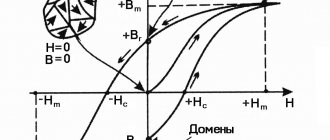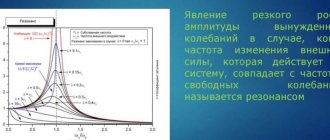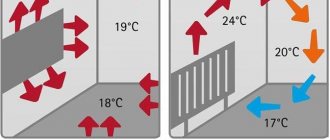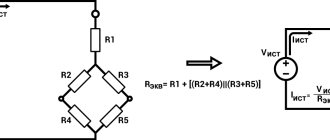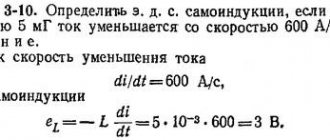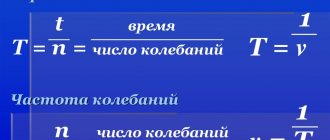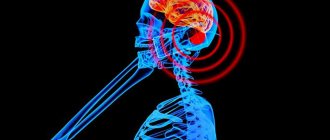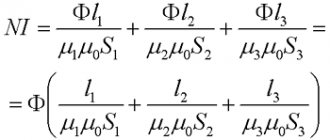Operating principle
This phenomenon is observed when a system is able to store and easily transfer energy between two or more different storage modes, such as kinetic and potential energy. However, there is some loss from cycle to cycle, called attenuation. When the damping is negligible, the resonant frequency is approximately equal to the natural frequency of the system, which is the frequency of unforced oscillation.
These phenomena occur with all types of oscillations or waves: mechanical, acoustic, electromagnetic, nuclear magnetic (NMR), electron spin (ESR), and quantum wave function resonance. Such systems can be used to generate vibrations of a certain frequency (for example, musical instruments).
The term "resonance" (from the Latin resonantia, "echo") comes from the field of acoustics, especially seen in musical instruments, such as when strings begin to vibrate and produce sound without direct input from the player.
RESULTS
RESULTS и камне, Ñем лÑÑÑе оÑÑажение. 4Ñ103 м/Ñ, в воздÑÑе â 3.3Ã102 м/Ñ. Сð ”ðµð¾² ² ° ñµð” ñ½½, ð² ð² · ððñññ¹ police ðµð · ð½ °µðices ñ½ ðlish ”ðñµñ½ ñ%P Ðion ð½ð² ² ° ñ ñ ° ññ ð ± RESULTS гÑба Ð»ÐµÐ¶Ð¸Ñ Ð½Ð° дÑÑÐ³Ð¸Ñ ÐºÐ°Ð¼Ð½ÑÑ, Ñ Ñ Ð½ÐµÐµ Ñ RESULTS Ñ Ð·ÐµÐ¼Ð»ÐµÐ¹, Ð²ÐµÐ´Ñ Ð¾Ð½Ð° каÑаеÑÑÑÑ Ð³ÑÑнÑа лиÑÑ Ð² не ASSURANCE. RESULTS, RESULTS, RESULTS, RESULTS. ROOM ASSURANCE, ASSURANCE ÑезонаÑоÑами › › What's wrong? RESULTS º, SMALL RESEARCH Ñезона нÑе. ROOM ¸Ð²ÑиÑÑ, возвÑаÑаеÑÑÑ Ð² Ñой же Ñазе, в коÑоÑой она наÑинала Ñвой пÑобег.
Examples of resonance in life
Pushing a person on a swing is a common example of this phenomenon. A loaded swing, a pendulum, has a natural vibration frequency and a resonant frequency that resists being pushed faster or slower.
An example is the oscillation of projectiles on a playground, which acts like a pendulum. A person's push while swinging at a natural swing interval causes the swing to go higher and higher (maximum amplitude), while attempting to swing at a faster or slower pace creates smaller arcs. This is because the energy absorbed by vibrations increases when the shocks correspond to natural vibrations.
The response is widely found in nature and is used in many artificial devices. This is the mechanism by which virtually all sine waves and vibrations are generated. Many of the sounds we hear, such as when hard objects made of metal, glass or wood hit, are caused by short vibrations in the object. Light and other short-wave electromagnetic radiation is created by resonance on the atomic scale, such as electrons in atoms. Other conditions in which the beneficial properties of this phenomenon may apply:
What kind of lighting do you prefer?
Built-in Chandelier
- Timekeeping mechanisms of modern watches, a balance wheel in a mechanical watch and a quartz crystal in a watch.
- Tidal response of the Bay of Fundy.
- Acoustic resonances of musical instruments and the human vocal tract.
- Destruction of a crystal glass under the influence of a musical right tone.
- Frictional idiophones, such as making a glass object (glass, bottle, vase), vibrate when rubbed around its edge with a fingertip.
- The electrical response of tuned circuits in radios and televisions that allow selective reception of radio frequencies.
- Creation of coherent light by optical resonance in a laser cavity.
- Orbital response, exemplified by some of the gas giant moons of the Solar System.
Atomic-scale material resonances are the basis of several spectroscopic techniques that are used in condensed matter physics, for example:
- Electronic spin.
- Mossbauer effect.
- Nuclear magnetic.
RESULTS
RESULTS ÑÐ°Ð¶ÐµÐ½Ð¸Ñ Ð²Ð¾Ð»Ð½Ñ. RESULTS. RESULTS, RESULTS, ROOM ASSURANCE. RESULTS ½Ð½Ð°Ñ Ð¾Ñ Ñдаленного пÑедмеÑа. What's wrong? ROOM ³Ð°ÑÑÑÑ Ð´Ð¾ÑÑаÑоÑно далеко, ÑÑÐ¾Ð±Ñ Ñел OPTIONS ¶ÐµÐ½Ð½Ñй звÑк. Так, помеÑении ÑÑÐµÐ´Ð½Ð¸Ñ ÑазмеÑов, напÑиР¼ÐµÑ, в комнаÑе кваÑÑиÑÑÑ, ÑÑа не бÑÐ´ÐµÑ . ROOM ASSURANCE, ASSURANCE, ASSURANCE . RESULTS, RESULTS, RESULTS, RESULTS кий, гÑомкий.
RESULTS RESULTS RESULTS ÑÑнÑм. Ð ÑлÑÑаÑÑ, когда важна звонкоÑÑÑÑ, нÑжно позР°Ð±Ð¾ÑиÑÑÑÑ Ð¾ Ñом, Ð¾Ñ Ñего бÑÐ´ÐµÑ Ð¾ÑÑажР°ÑÑÑÑ Ð°ÐºÑÑÑиÑеÑÐºÐ°Ñ Ð²Ð¾Ð»Ð½Ð°. RESULTS.
Types of phenomenon
In describing resonance, G. Galileo drew attention to the most essential thing - the ability of a mechanical oscillatory system (heavy pendulum) to accumulate energy, which is supplied from an external source with a certain frequency. Manifestations of resonance have certain characteristics in different systems and therefore different types are distinguished.
Mechanical and acoustic
Mechanical resonance is the tendency of a mechanical system to absorb more energy when its vibration frequency matches the system's natural vibration frequency. This can lead to severe motion fluctuations and even catastrophic failure in unfinished structures, including bridges, buildings, trains and airplanes. When designing facilities, engineers must ensure that the mechanical resonant frequencies of component parts do not match the oscillatory frequencies of motors or other oscillating parts to avoid a phenomenon known as resonant disaster.
Electrical resonance
Occurs in an electrical circuit at a certain resonant frequency when the circuit impedance is minimum in a series circuit or maximum in a parallel circuit. Resonance in circuits is used to transmit and receive wireless communications such as television, cellular, or radio.
Optical resonance
An optical cavity, also called an optical resonator, is a special arrangement of mirrors that forms a standing wave resonator for light waves . Optical cavities are the main component of lasers, surrounding the amplification medium and providing feedback to the laser radiation. They are also used in optical parametric oscillators and some interferometers.
Light confined within the cavity produces standing waves repeatedly for specific resonant frequencies. The resulting standing wave patterns are called "modes". Longitudinal modes differ only in frequency, while transverse modes differ for different frequencies and have different intensity patterns across the beam cross section. Ring resonators and whispering galleries are examples of optical resonators that do not produce standing waves.
Orbital wobble
In space mechanics, an orbital response occurs when two orbiting bodies exert a regular, periodic gravitational influence on each other. This is usually because their orbital periods are related by the ratio of two small integers. Orbital resonances significantly enhance the mutual gravitational influence of bodies. In most cases, this results in an unstable interaction in which the bodies exchange momentum and displacement until resonance no longer exists.
Under some circumstances, a resonant system can be stable and self-correcting to keep bodies in resonance. Examples are the 1:2:4 resonance of Jupiter's moons Ganymede, Europa and Io and the 2:3 resonance between Pluto and Neptune. Unstable resonances with Saturn's inner moons create gaps in Saturn's rings. A special case of 1:1 resonance (between bodies with similar orbital radii) causes large Solar System bodies to clear out the neighborhoods around their orbits, pushing out almost everything else around them.
Atomic, partial and molecular
Nuclear Magnetic Resonance (NMR) is the name given to the physical resonance phenomenon associated with the observation of specific quantum mechanical magnetic properties of an atomic nucleus when an external magnetic field is present. Many scientific methods use NMR phenomena to study molecular physics, crystals, and non-crystalline materials. NMR is also commonly used in modern medical imaging techniques such as magnetic resonance imaging (MRI).
Series oscillating circuit
In an oscillatory circuit you can obtain undamped oscillations if you connect it to an alternating current source. If the source is connected in series with a coil L and a capacitor C, then such a circuit is called a series oscillatory circuit (Fig. 3).
When an external source is connected to the circuit, it is not the circuit’s own (free) oscillations that arise, which are determined by the values of L and C, but with the frequency of the source voltage U=Um∙sinω∙t. Such circuit oscillations are called forced. During forced oscillations, the circuit elements L, C will have, depending on the source frequency, certain inductive XL and capacitive Xc resistances and corresponding voltage drops UL, Uc across them. But the circuit has not only reactance, but also an active loss resistance R, which is basically equal to the resistance of the coil wire.
Since the voltages in the coil and capacitor are shifted relative to the current by different phase angles, they can be shown more clearly in vector diagrams (Fig. 4)
It will be interesting➡ Voltage control relay
The voltage across the inductive reactance UL leads the current by 90°, and the voltage across the capacitive reactance Uc lags the current at the same angle of 90°. And it turns out that the vectors UL and Uc are shifted by 180°, i.e. are in antiphase. The voltage vector at the source U will be equal to the geometric sum of the voltage of the vector UR and the vector of the voltage difference of the reactances UL-Uc.
As can be seen from the diagram in Fig. 4a, at UL > Uc, the external source voltage leads the current in the oscillatory circuit by an angle φ<90° and is located above the abscissa axis in the inductance voltage zone. This means that in this case the circuit has an inductive resistance. At UL < Uc (Fig. 4b), the source vector will already lag behind the current vector by an angle φ<90° and the circuit will have capacitive reactance.
The total resistance of the circuit Z will be equal to:
The amplitude value of the current Im is determined by the formula:
where Um is the amplitude voltage of the source, and ω is its angular frequency.
When equality is satisfied:
The benefits and harms of resonance
In order to draw some conclusion about the pros and cons of resonance, it is necessary to consider in which cases it can manifest itself most actively and noticeably for human activity.
Positive effect
The response phenomenon is widely used in science and technology . For example, the operation of many radio circuits and devices is based on this phenomenon.
- Two-stroke engine. The muffler of a two-stroke engine has a special shape designed to create a resonant phenomenon. It improves engine performance by reducing consumption and pollution. This resonance partially reduces the unburned gases and increases compression in the cylinder.
- Musical instruments. In the case of string and wind instruments, sound production occurs mainly when the oscillatory system (strings, columns of air) is excited until the phenomenon of resonance occurs.
- Radios. Each radio station emits an electromagnetic wave with a clearly defined frequency. To capture it, the RLC circuit is forcibly vibrated by an antenna, which captures all electromagnetic waves that reach it. To listen to one station, the natural frequency of the RLC circuit must be tuned to the frequency of the desired transmitter by changing the capacitance of the variable capacitor (the operation is performed by pressing the station search button). All radio communication systems, whether transmitters or receivers, use resonators to "filter" the frequencies of the signals they process.
- Magnetic resonance imaging (MRI). In 1946, two Americans, Felix Bloch and Edward Mills Purcell, independently discovered the phenomenon of nuclear magnetic resonance, also called NMR, which earned them the Nobel Prize in Physics.
Negative impact
However, the phenomenon is not always useful . You can often find references to cases where suspension bridges broke when soldiers walked across them “in step.” At the same time, they refer to the manifestation of the resonant effect of resonance, and the fight against it becomes large-scale.
- Motor transport. Motorists are often annoyed by noise that occurs at certain vehicle speeds or as a result of engine operation. Some slightly rounded parts of the body resonate and emit sound vibrations. The car itself, with its suspension system, is an oscillator, equipped with effective shock absorbers that prevent sharp resonance from occurring.
- Bridges. The bridge can perform vertical and transverse vibrations. Each of these types of oscillations has its own period. If the lines are suspended, the system has a very different resonant frequency.
- Building. Tall buildings are susceptible to earthquakes. Some passive devices help protect them: they are oscillators whose natural frequency is close to the frequency of the building itself. Thus, the energy is completely absorbed by the pendulum, preventing the destruction of the building.
Mysterious house
In “Stories about Old Moscow” by A. Vyurkov, a house is described that sounds like a scary voice. The main character of the work, Ivan Pavlovich, decided to get rich by fraud. He hired a team of masons to build him an apartment building and did not pay them the full amount promised. Soon the tenants began to leave the hotel one after another, because they were frightened by the evil spirits that howled in an inhuman voice. Ivan Pavlovich turned to the police, and the policemen remained in ambush for the night. They suffered the same fate as the tenants. Eerie sighs and howls were heard in the empty rooms. The law enforcement officers left the building in horror with the scary brownie.
Ivan Pavlovich was left without money and without tenants. He had nothing to pay the interest on the loan, so his property and himself were seized. As time passed, one of the contractors revealed to Ivan Pavlovich the secret of the mystical house. It turns out that the deceived workers decided to take revenge: they walled up empty bottles in the wall, which sounded with every gust of wind, scaring the guests.
Fighting resonance
But despite the sometimes disastrous consequences of the response effect, it is quite possible and necessary to fight it. To avoid the unwanted occurrence of this phenomenon, two methods of simultaneously applying resonance and combating it are usually used:
- “Dissociation” of frequencies is carried out, which, if they coincide, will lead to undesirable consequences. To do this, they increase the friction of various mechanisms or change the natural frequency of vibration of the system.
- They increase the damping of vibrations, for example, by placing the engine on a rubber lining or springs.
Useful tips Connection diagrams Principles of operation of devices Main concepts Meters from Energomer Precautions Incandescent lamps Video instructions for the master Testing with a multimeter
“оÑÑий” каменÑ
ROOM ¿ÑÑÑÑÐ½Ñ Ñо знамениÑÑм “поÑÑи м» камнем. ROOM еннÑй бÑбенÂ.” RESULTS: RESULTS: RESULTS, RESULTS "CONDITIONAL CONDITIONS, CONCLUSIONS, CONDITIONS" окола. RESULTS What's wrong?
RESULTS â ÑÑÑ Ð¶Ðµ Ð¾Ñ ÑоÑки ÑÑÐ¾Ð»ÐºÐ½Ð¾Ð²ÐµÐ½Ð¸Ñ Ð²Ð¾ вÑе ÑÑоÑÐ¾Ð½Ñ RESULTS волнÑ. RESULTS ²Ð»Ð¸ÑÑÑ. RESULTS SMALLERY RESULTS sÑаниÑÑÑ . ROOM ROOM, ROOM ROOM RESULTS · ÐºÐ°Ð¼Ð½Ñ Ð² воздÑS. RESULTS ÑÑÑ Ð² обÑаÑном напÑавлении.
Electromechanical resonators
The phenomenon of mechanical resonance is an increase in the amplitude of forced oscillatory movements. An electromechanical resonator is a device designed to measure forces of a mechanical nature and its derivatives. In terms of technical design, it is similar to a piezoelectric sensor, but with a higher quality factor. The main elements of such a device are:
- a piezoelectric plate in the shape of a paired tuning fork (parallel identical rods with ends connected to each other);
- electrodes attached to the ends of the piezoelectric component.
To reduce the frequency, a concentrated mass is used, which is connected to the middle parts of the rods using a jumper.
Electromechanical resonator design
The picture below shows the following zones and elements:
- 1 – rods (the cross-section is uniform throughout the entire rod);
- 2 – combined elements;
- 3 – electrode placement area;
- 4 – concentration masses;
- 5 – jumpers;
- 6 – places for fixing the resonator and connecting the circuit for force measurement.
For your information. Electromechanical resonators are parts or devices that combine the properties of mechanical resonation and piezoelectric transformations.
The destructive power of sound
Many people have probably heard that a wine glass can be broken with the voice of an opera singer. If you lightly hit a glass with a spoon, it will “ring” like a bell at its resonant frequency. If sound pressure is applied to glass at a certain frequency, it begins to vibrate. As the stimulus continues, vibration builds up in the glass until it collapses when the mechanical limits are exceeded.
Examples of beneficial and harmful resonance are everywhere. Microwaves are all around us, from the microwave oven that heats food without the use of external heat, to the vibrations in the earth's crust that cause devastating earthquakes.



